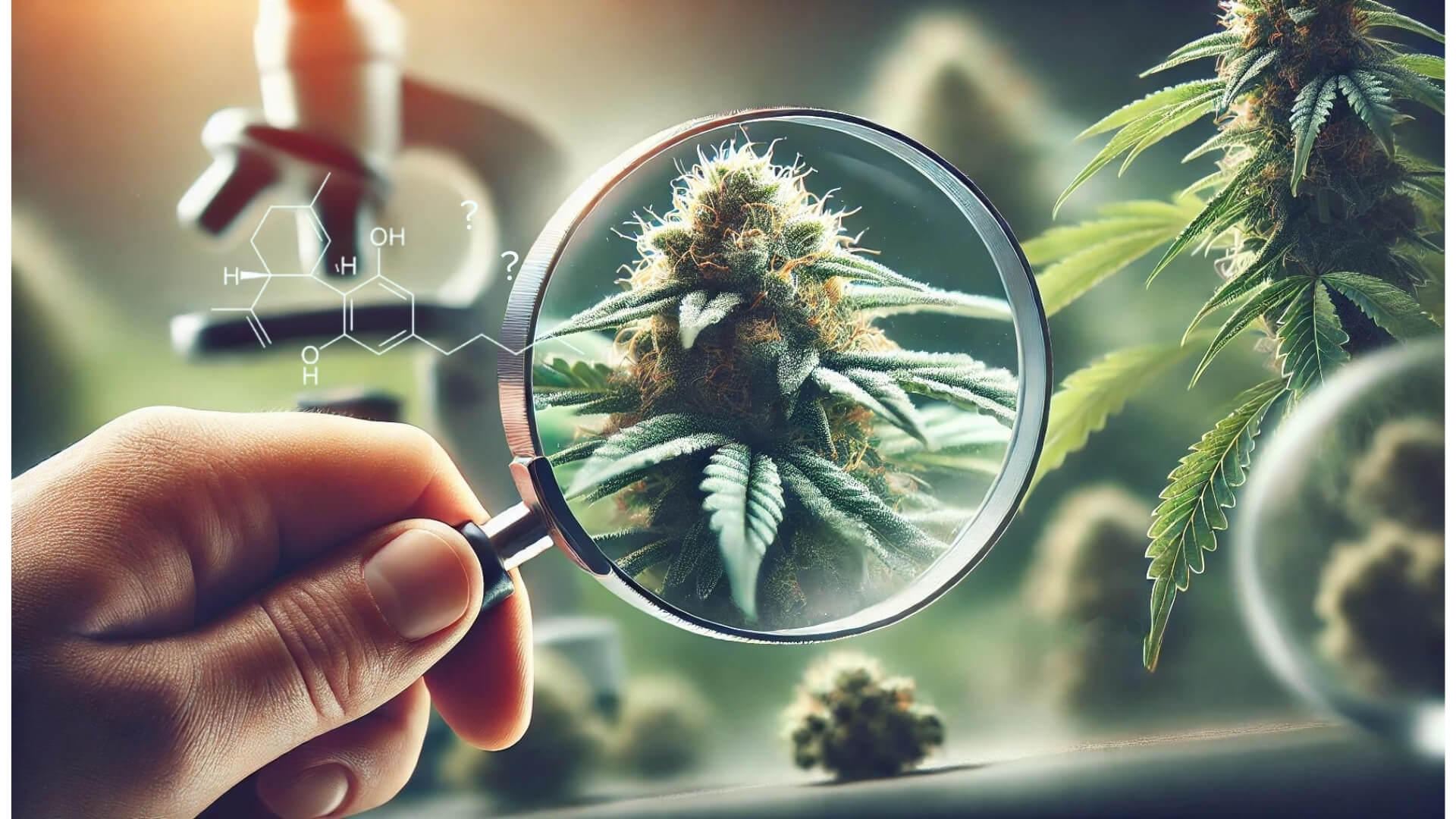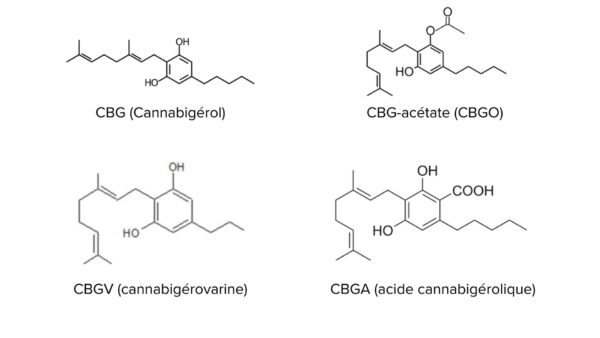Have a question? 06 70 73 89 02
🔞 Not for sale to under 18s
✨ 15% off EVERYTHING on the site with the code BON2026 🥳 ( except accessories and gummies)
Have a question? 06 70 73 89 02

"CBG9" is the name of a new molecule that's been causing a stir since the banning of CBD derivatives from the Benzochromene group; THCP, HHCPO and Other THCJD.
Cannabigerol-9, not to be confused with CB9, is a recently discovered natural secondary cannabinoid which, according to some sources, is "promising" and "innovative". But what is it really, and what exactly do the scientific studies say?
According to most sources available in Google searches, Cannabigerol-9 is a naturally synthesized minor cannabinoid, like the 100 or 200 other cannabinoids produced by cannabis plants.
This CBG9 would be a by-product of CBG, itself derived from its acid form CBGA. It is said to produce effects similar to CBG in a more potent version. Depending on the source, it may or may not be psychoactive, and is capable of the following effects:
For a full review of cannabigerol, see our dossier on CBG: effects, benefits and use.
Most of the few articles available on the subject of CBG9 invariably praise its success with researchers, who see it as a highly promising molecule. But here's the rub: most of them don't cite any specific studies. Very few do, and we were surprised to find no mention of this molecule in any of the sources.
So we decided to look for those famous "CBG9" studies ourselves, and we had to face the facts: "Cannabigerol-9" doesn't exist; it's a trade name.
Since June, when the old derivatives were banned, this type of product has multiplied at an ever-increasing rate. Our products include THM, which is a blend of minor cannabinoids, and THCN, which is CBD flower infused in a high-concentration CBN isolate.
But the difference with CBG-9 is that the cannabinoid that's supposed to be present doesn't exist. So which cannabinoid is actually present? How do we know what we're consuming?

Drawing on the limited information available on CBG9 synthesis and its effects, we set out to deduce the cannabinoid behind the name.
But even assuming that all products labelled CBG9 contained the same molecule, that this molecule was indeed derived from CBG, and that the characteristics given were real - which is far from certain - the task was not an easy one, as cannabinoids are similar in some respects.
Nevertheless, we were able to draw up a rather short list of possible candidates for the CBG9 position:
CBG-acetate is a chemically modified version of CBG, as is HHCPO for HHCP or THCPO for THCP. This modification would affect the way the molecule interacts with endocannabinoid receptors, and hence its effects.
Very few studies have looked into this. But they suggest that it retains the anti-inflammatory, antibacterial and possibly antitumor properties of CBG, with longer duration and increased potency.
CBG DMH is a synthetic form of CBG. As its name suggests, it is a CBG molecule to which two heptyl groups (a chain composed of carbon and hydrogen) have been added. In this way, the molecule is more stable and achieves more significant bioavailability. It has been studied for its anti-inflammatory, antibacterial and anti-tumor properties, as well as for its lack of psychoactive properties.
The addition of the heptyl group is not new, and is the basis of several components in the famous Spyce blend (JWH-018, HU-210, AM-2201...). A psychoactive blend made from dried weed banned worldwide in the 2000s, but CBG-DMH, being non-psychoactive, is still legal.
CBGA is the acid form of CBG. It is the precursor molecule of CBG, but also of other cannabinoids such as THCA, CBDA and CBCA, which are themselves precursors of THC, CBD and CBC respectively. CBGA has no psychoactive effect, but is present in large quantities in fresh plants, before they undergo decarboxylation during drying.
CBGA is said to have similar effects to CBD, sharing its antioxidant and anti-inflammatory properties.
CBGV is a propyl derivative of CBG. In other words, it has a shorter, three-carbon side chain than conventional CBG, which has five.
It belongs to the "varine" class of cannabinoids, such as tethahydrocannabivarin (thcv) or cannabidivarin (CBDV). Its effects are less well studied than those of CBG, but it appears to have similar properties to the latter, including anti-inflammatory and antibacterial effects.
Hydrogenated version of CBG, like H4CBD for CBD. The difference is that HCBG has never been discovered in its natural state. It is a chemical creation.
This additional hydrogen molecule is said to modify the potency of CBG's effects, giving it a stronger, more stable structure which would enable it to interact more strongly with the endocannabinoid system. The result would be more powerful, longer-lasting effects.
Obviously, without being able to clearly identify the cannabinoid present under the name CBG9, we can't be sure of the compound's legal status. We'll have to rely on the seller's good faith.
Discover our legal CBD derivatives
But beyond the simple legal status of the compound, one of the major problems this poses is health, since we can't be sure of our tolerance to a product that is unknown to us.
CBG9 really is a very interesting cannabinoid. Not so much for its properties, whether real or supposed, but above all because, on its own, this cannabinoid could symbolize various problems facing the CBD world in France.
The fact that CBD in France has been forcibly accepted by decision of the European Council, but is not governed by clear, precise legislation. The fact that some molecules are banned from one day to the next, only to be conditionally reaccepted "out of obligation", like THCV. The fact that others are marketed under an alias - a better-selling name - without the real molecule being mentioned, as was the case with the famous "Delta-p", which was none other than THCP when it was still authorized.
Perhaps one day these issues will be addressed and resolved, but in the meantime, always check the information given by sellers if you want to be sure of what you're consuming. And if you've enjoyed this article, please feel free to browse our blog!